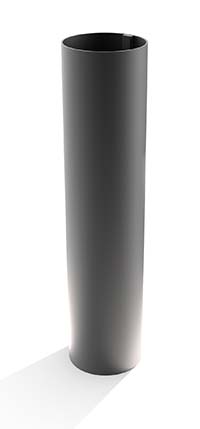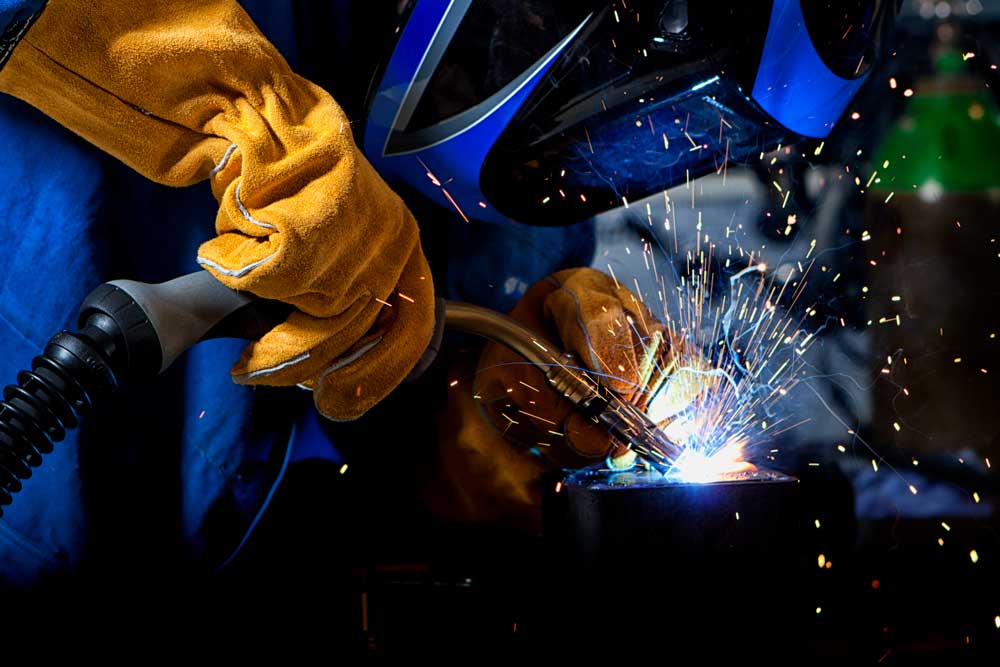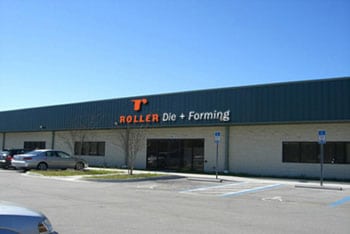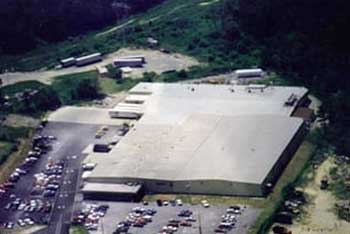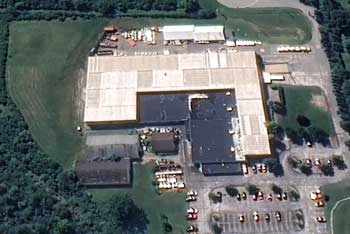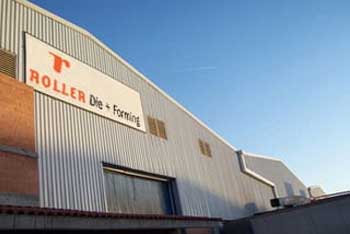Recycling metals is transforming the manufacturing industry. Many manufacturers find that using recycled metals offers numerous benefits beyond cost savings. From environmental advantages to quality performance, recycled metals are essential in various sectors. Understanding these benefits is crucial for manufacturers looking to stay competitive and sustainable in 2025.
Benefits of Using Recycled Metals in Manufacturing
Using recycled metals in manufacturing offers numerous benefits. One significant advantage is environmental sustainability. Recycling metals reduces the need to extract new raw materials, conserving natural resources like ore and fossil fuels. This process also decreases greenhouse gas emissions, contributing less to climate change and pollution.
Another benefit is energy efficiency. Manufacturing with recycled metals requires substantially less energy than processing new raw materials. For example, recycling aluminum saves up to 95% of the energy needed to produce it from bauxite ore. This energy saving translates into lower production costs and a reduced carbon footprint.
Supply chain stability is also enhanced. Using recycled metals can buffer against the volatility of raw material prices and supply disruptions. A steady source of recycled materials ensures production can continue without significant delays, helping manufacturers meet their deadlines and customer demands.
Environmental Impact of Metal Recycling
The environmental impact of metal recycling is substantial. Recycling metals helps reduce the amount of waste that ends up in landfills. In many cases, metals like aluminum, steel, copper, and brass can be reprocessed repeatedly without losing their properties, making them ideal for sustainable practices.
Metal recycling also minimizes the need for mining activities, which are often environmentally harmful. Mining operations can lead to soil erosion, water contamination, and habitat destruction. By recycling metals, we can preserve ecosystems and reduce the adverse effects of mining.
Recycling metals also contributes to lowering greenhouse gas emissions. Producing new metals from raw ore is energy-intensive and results in a large carbon footprint. In contrast, recycling metal scraps requires significantly less energy, leading to a reduction in CO2 emissions. This shift helps combat global warming and supports cleaner air and water.
Cost Savings for Manufacturers
Manufacturers find cost savings when using recycled metals. One primary reason is the reduced energy consumption needed to process recycled materials. As previously mentioned, recycling aluminum, for example, saves up to 95% of the energy compared to producing new aluminum. These energy savings translate to lower electricity and fuel costs, which reduce manufacturing expenses.
Lower material costs are another advantage. Recycled metals often cost less than new raw materials. This price difference allows manufacturers to cut material expenses, freeing up capital for other investments or passing the savings on to customers.
Moreover, using recycled metals can yield tax incentives and grants. Various government programs provide financial benefits to companies that incorporate sustainable practices. These incentives can further reduce operating costs, making recycled metals eco-friendly and economically sensible.
Quality and Performance of Recycled Metals
Quality and performance are crucial for any manufacturer, and recycled metals often meet or exceed these criteria. Advances in recycling technology have made it possible to produce high-quality metals that perform as well as or better than their newly mined counterparts.
For instance, recycled aluminum and steel can be refined to achieve the same purity and strength as new metals. These recycled metals undergo rigorous testing and quality control measures to meet industry standards. This means manufacturers can rely on recycled metals for their durability and performance in various applications.
Another benefit is the consistency in the properties of recycled metals. Modern recycling processes can ensure that the metal’s composition remains stable, providing predictable and reliable performance. This consistency is essential in industries like automotive and aerospace, where material performance directly impacts safety and efficiency. Manufacturers can use recycled metals to maintain high quality while supporting sustainability.
Commonly Recycled Metals in Manufacturing
Many metals are commonly recycled in manufacturing due to their durability and value. Some of the most frequently recycled metals include:
1. Steel: Widely used in construction, automotive, and appliances, steel is highly recyclable. Almost all steel products contain recycled content, making them a sustainable manufacturing staple.
2. Aluminum: This lightweight and versatile metal is perfect for cans, automotive parts, and aircraft components. Recycling aluminum saves significant energy compared to producing new aluminum from bauxite ore.
3. Copper: Often found in electrical wiring, plumbing, and electronics, copper retains its properties well through recycling, making it a valuable resource.
4. Brass: A combination of copper and zinc, brass is used in fittings, fixtures, and musical instruments. It is durable and easily recycled.
5. Lead: Primarily used in batteries, lead is recyclable but requires careful handling due to its toxicity. Proper recycling processes can safely reclaim lead for reuse.
Regulatory Incentives for Using Recycled Metals
Various regulations and incentives promote the use of recycled metals in manufacturing. Governments worldwide implement policies to encourage sustainable practices, reduce environmental impact, and conserve natural resources.
1. Tax Benefits: Manufacturers using recycled metals may qualify for tax credits or deductions. These financial incentives lower operational costs and encourage eco-friendly practices.
2. Grants and Funding: Some governments offer grants or funding programs to support companies investing in recycling technology and infrastructure. This financial support makes it easier for manufacturers to integrate recycled metals into their supply chains.
3. Regulatory Mandates: Legislation in some regions requires products to contain a certain percentage of recycled content. Compliance with these mandates ensures that manufacturers contribute to sustainability goals.
4. Environmental Certifications: Certifications like LEED (Leadership in Energy and Environmental Design) or ISO 14001 can enhance a company’s reputation and marketability. These certifications often require or reward the use of recycled materials.
Understanding and leveraging these incentives helps manufacturers adopt sustainable practices while benefiting financially and enhancing their market position.
Technological Innovations in Metal Recycling
Advancements in technology are revolutionizing metal recycling, making it more efficient and effective. Some notable innovations include:
1. Advanced Sorting Technologies: Modern sorting methods, like X-ray fluorescence and laser-induced breakdown spectroscopy, accurately identify and separate different types of metals, reducing contamination and improving recycling rates.
2. Smart Recycling Systems: Internet of Things (IoT) devices and sensors enable real-time monitoring and data collection throughout the recycling process. This technology ensures better tracking, optimization, and efficiency.
3. Robotics and Automation: Robots can handle repetitive tasks like sorting and separating metals, increasing speed and accuracy while reducing labor costs. Automation streamlines the recycling process, enhancing productivity.
4. Chemical Recycling: Emerging chemical processes break down complex metal alloys to separate and purify individual elements. This method allows for the recycling and processing of previously challenging metals.
5. Electrochemical Methods: Advanced electrochemical techniques recover high-purity metals from electronic waste and other mixed metal scraps, supporting the recycling of valuable resources.
These technological innovations enable manufacturers to improve their recycling efforts, reduce waste, and produce high-quality recycled metals. Embracing these advancements helps companies stay competitive and sustainable.
Case Examples of Recycled Metals in Various Industries
Recycled metals are making significant impacts across different industries. Here are some examples:
1. Automotive Industry: Major car manufacturers use recycled steel and aluminum in vehicle production. This practice reduces costs and meets sustainability goals. For example, Ford uses recycled metals to produce engine blocks and body panels without compromising quality and durability.
2. Construction Industry: Projects often incorporate recycled steel beams and aluminum components. These materials have the same strength and reliability as new metals but have a lower environmental footprint. Green building certifications like LEED often require or benefit from using recycled materials.
3. Electronics Industry: Companies like Dell and HP recycle metals from old electronics to create new products. Recycled copper and aluminum are used in wiring and casings, ensuring high performance and reducing electronic waste.
Future Trends in Metal Recycling
The future of metal recycling is bright, driven by innovation and sustainability goals. Some key trends include:
1. Enhanced Sorting Technologies: Future advancements in sorting will improve the separation of metal types, leading to higher purity levels and more efficient recycling processes.
2. Automation and AI: Integrating artificial intelligence and robotics into recycling frameworks will boost efficiency, reduce labor costs, and increase the accuracy of metal recovery.
3. Circular Economy Models: More manufacturers are moving towards circular economy models, where products are designed with recycling and reuse in mind. This shift will result in higher demand for recycled materials and better resource management.
4. Energy-Efficient Recycling: Emerging technologies aim to reduce the energy needed for recycling processes, further lowering the carbon footprint of metal production.
5. Policy and Regulation Support: Governments worldwide will likely introduce more policies supporting recycling, providing regulatory and financial incentives to businesses adopting sustainable practices.
These trends indicate a growing focus on efficiency, innovation, and environmental responsibility, promising a more sustainable future for the metal recycling industry.
How to Implement Recycled Metals in Your Supply Chain
Implementing recycled metals in your supply chain requires careful planning and execution. Here are some steps to guide you:
1. Assess Material Needs: Identify the types and quantities of metals your production processes require. Understanding your material needs helps you source suitable recycled metals.
2. Partner with Reliable Suppliers: Choose suppliers consistently providing high-quality recycled metals. Look for certifications and references to ensure reliability.
3. Upgrade Technology: Invest in machinery and technologies that can handle recycled materials efficiently. This might include updated melting equipment or advanced sorting systems.
4. Train Staff: Educate your team on the importance and handling of recycled metals. Proper training ensures smooth integration and maintains product quality.
5. Monitor and Optimize: Continuously monitor the performance of recycled metals in your production process. Gather feedback and data to optimize usage and address any issues promptly.
By following these steps, manufacturers can seamlessly incorporate recycled metals into their supply chain, achieving sustainability goals without sacrificing quality or efficiency.
Challenges and Solutions in Using Recycled Metals
Using recycled metals can present challenges, but solutions are available to tackle these issues.
1. Quality Variability: Recycled metals might vary in quality. Solution: Work with reputable suppliers who adhere to strict quality control measures, ensuring consistent material standards.
2. Contamination: Recycled metals can sometimes contain impurities. Solution: Employ advanced sorting and purification technologies to remove contaminants and enhance metal purity.
3. Supply Chain Inconsistency: Fluctuations in the availability of recycled metals can disrupt production. Solution: Build a network of multiple reliable suppliers and maintain a buffer stock to mitigate supply chain risks.
4. Investment Costs: Upgrading equipment to handle recycled metals can be costly. Solution: Seek financial incentives, such as grants or tax benefits, to offset initial investment costs and focus on long-term savings.
Conclusion
Recycled metals offer manufacturers a wealth of benefits, including cost savings, environmental sustainability, and high-quality performance. The future of metal recycling looks promising, with trends pointing towards increased use of AI, enhanced sorting technologies, and more robust policy support. Embracing these advances will be vital to staying competitive and sustainable.
At Roller Die + Forming, we understand the importance of sustainability and quality. By partnering with our metal forming company, you can effectively incorporate recycled metals into your supply chain and achieve your production goals. Contact us today to discover how we can help you use recycled metals best in your manufacturing processes. Let’s work together for a greener, more sustainable future.

